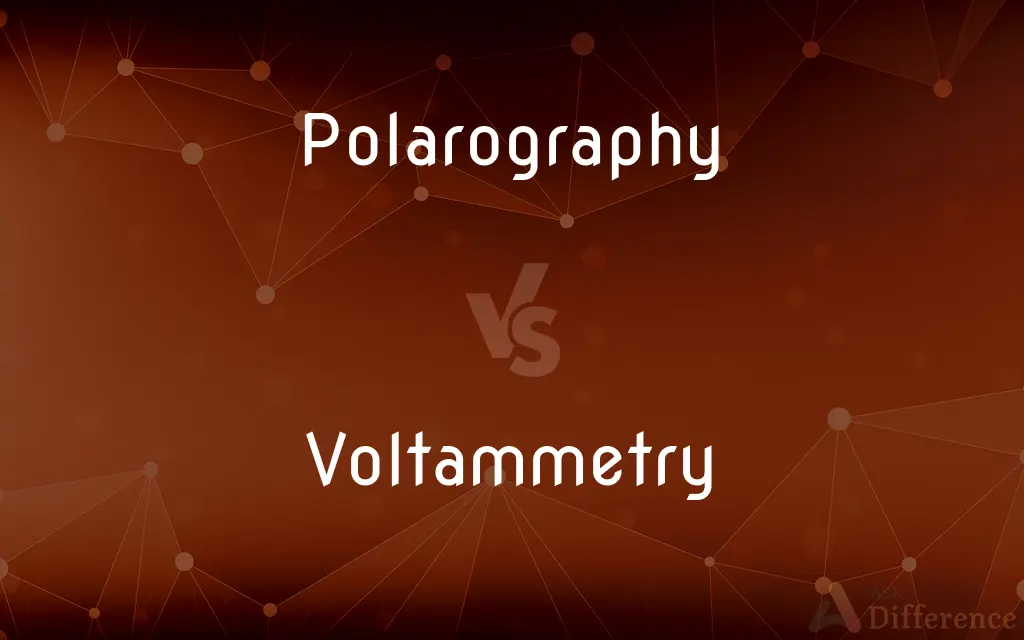Polarography vs. Voltammetry — What's the Difference?

Difference Between Polarography and Voltammetry
ADVERTISEMENT
Compare with Definitions
Polarography
Polarography is a type of voltammetry where the working electrode is a dropping mercury electrode (DME) or a static mercury drop electrode (SMDE), which are useful for their wide cathodic ranges and renewable surfaces. It was invented in 1922 by Czech chemist Jaroslav Heyrovský, for which he won the Nobel prize in 1959.
Voltammetry
Voltammetry is a category of electroanalytical methods used in analytical chemistry and various industrial processes. In voltammetry, information about an analyte is obtained by measuring the current as the potential is varied.
Polarography
An electrochemical method of quantitative or qualitative analysis based on the relationship between an increasing current passing through a solution and the increasing voltage used to produce the current.
Voltammetry
Any of several electrochemical analytical technique in which a current is measured as a voltage is varied.
Polarography
(chemistry) An electrochemical technique for the analysis of redox reactions.
ADVERTISEMENT
Polarography
An electrochemical method of chemical analysis
Share Your Discovery

Previous Comparison
Engineer vs. Architect
Next Comparison
Ubuntu vs. Fedora














































